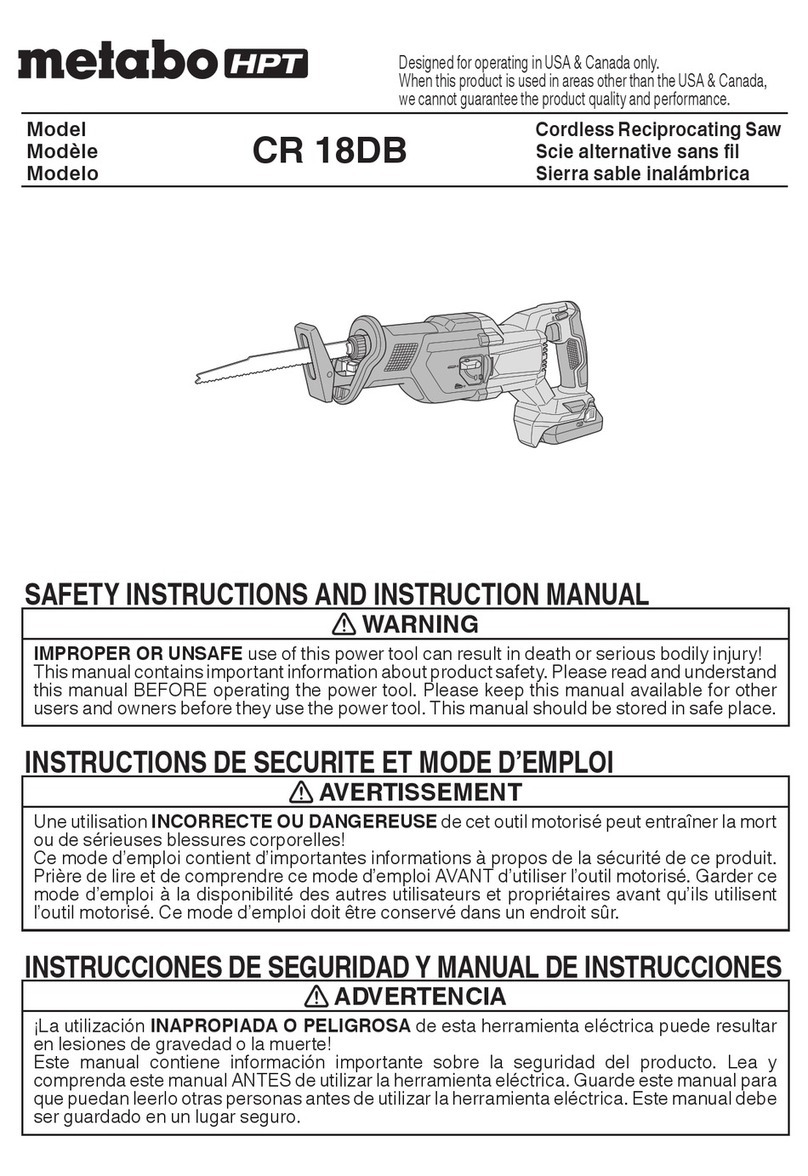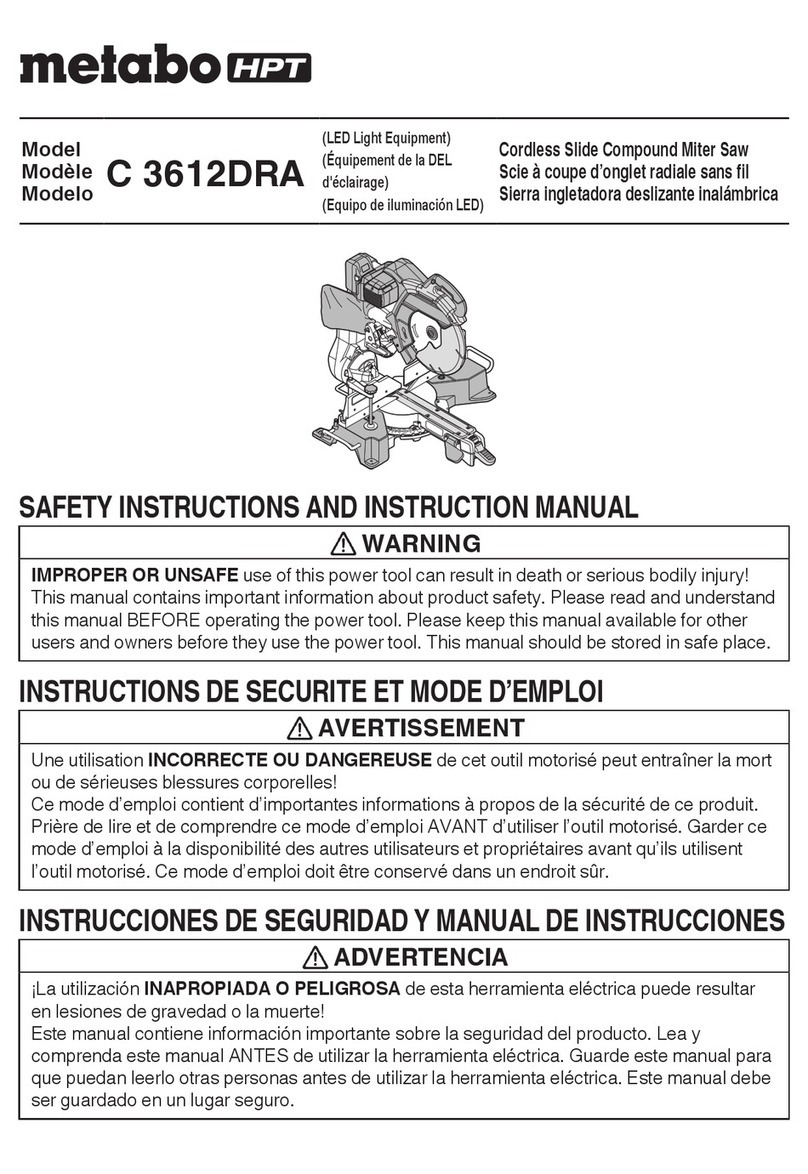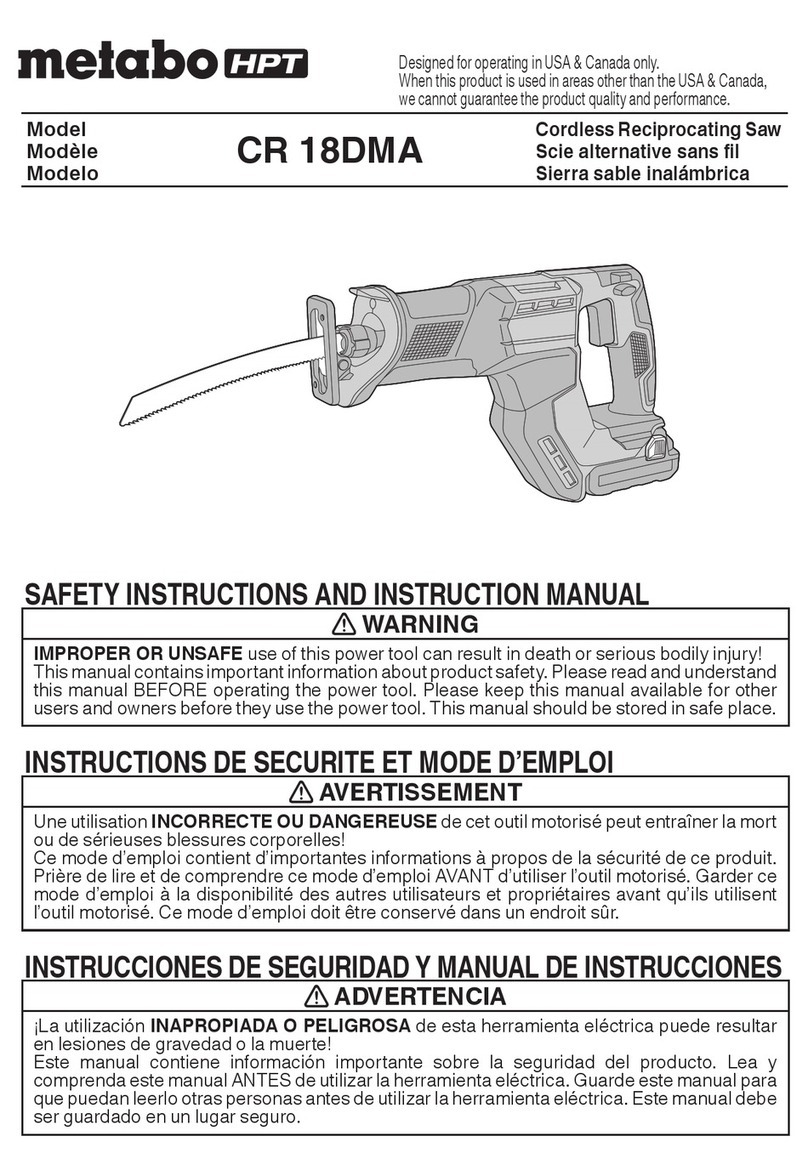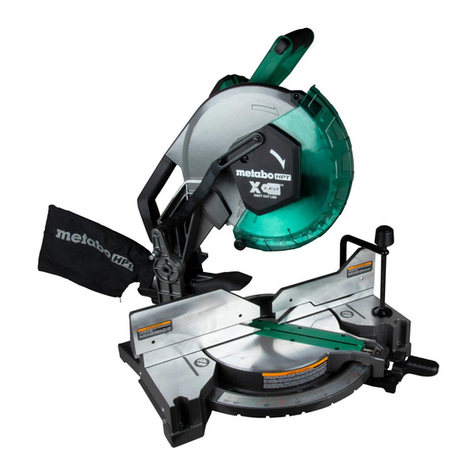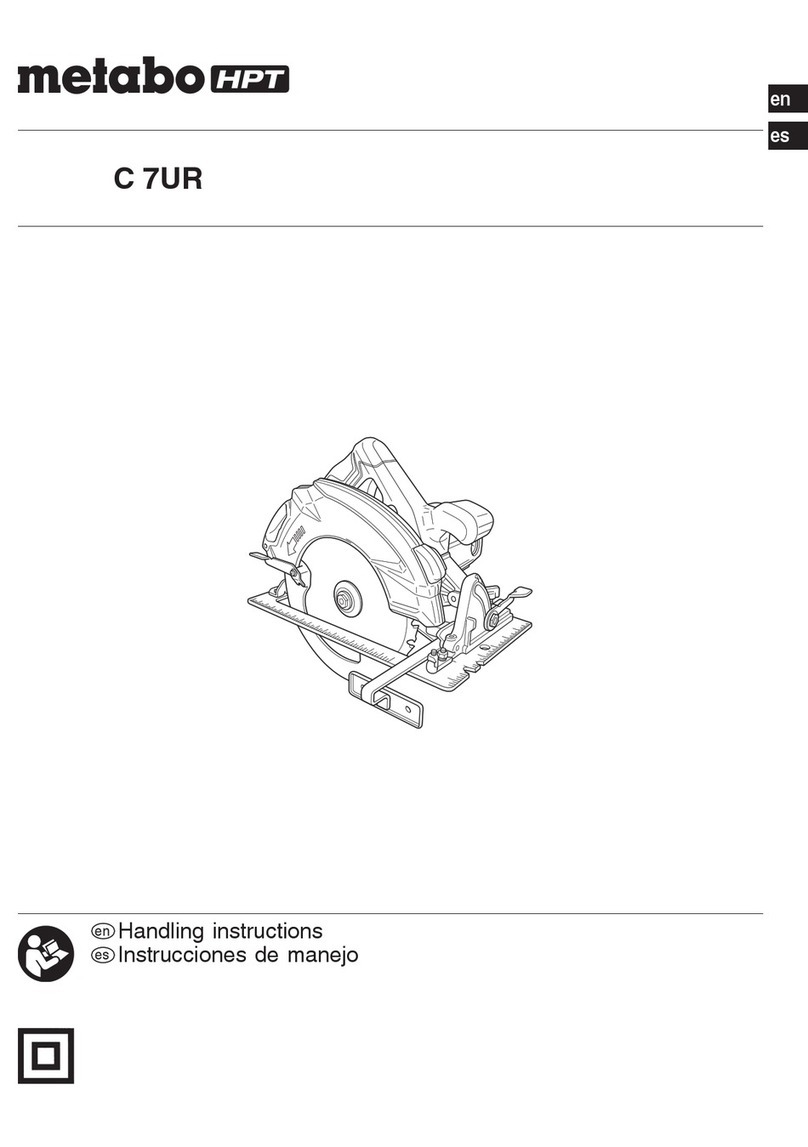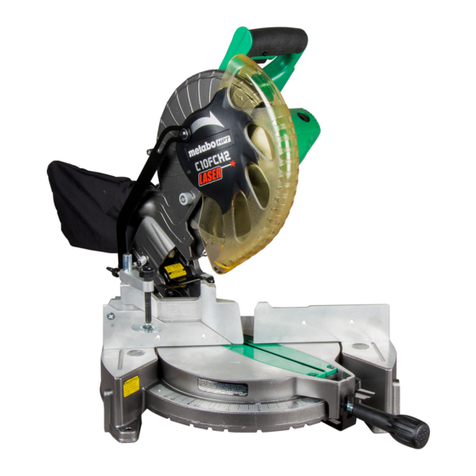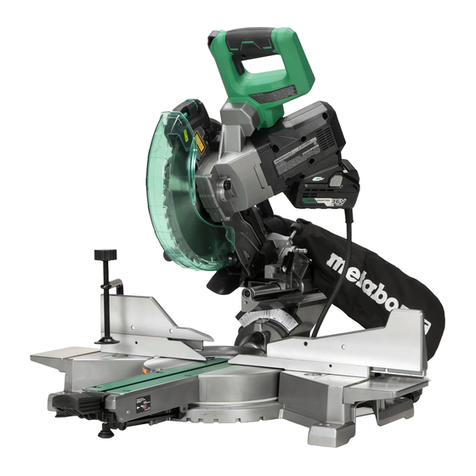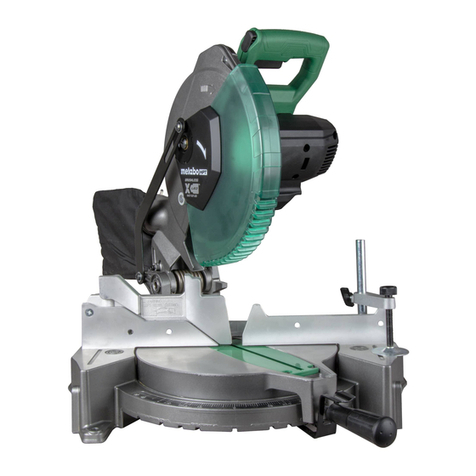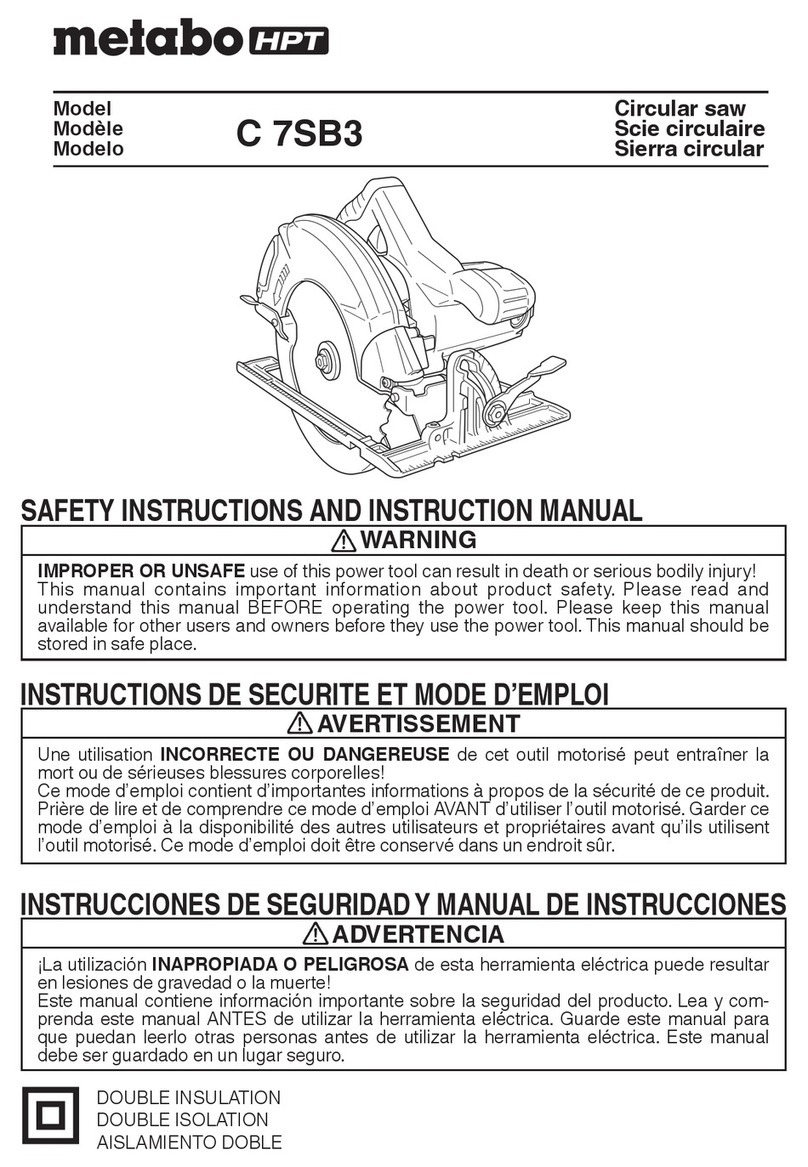
3
English
3) Personal safety
a) Stay alert, watch what you are doing and use common
sense when operating a power tool.
Do not use a power tool while you are tired or under
the influence of drugs, alcohol or medication.
A moment of inattention while operating power tools may
result in serious personal injury.
b) Use personal protective equipment. Always wear eye
protection.
Protective equipment such as a dust mask, non-skid safety
shoes, hard hat or hearing protection used for appropriate
conditions will reduce personal injuries.
c) Prevent unintentional starting. Ensure the switch is
in the off-position before connecting to power source
and/or battery pack, picking up or carrying the tool.
Carrying power tools with your finger on the switch or
energising power tools that have the switch on invites
accidents.
d) Remove any adjusting key or wrench before turning
the power tool on.
A wrench or a key left attached to a rotating part of the
power tool may result in personal injury.
e) Do not overreach. Keep proper footing and balance
at all times.
This enables better control of the power tool in unexpected
situations.
f) Dress properly. Do not wear loose clothing or
jewellery. Keep your hair and clothing away from
moving parts.
Loose clothes, jewellery or long hair can be caught in
moving parts.
g) If devices are provided for the connection of dust
extraction and collection facilities, ensure these are
connected and properly used.
Use of dust collection can reduce dust-related hazards.
h) Do not let familiarity gained from frequent use of
tools allow you to become complacent and ignore
tool safety principles.
A careless action can cause severe injury within a fraction
of a second.
4) Power tool use and care
a) Do not force the power tool. Use the correct power
tool for your application.
The correct power tool will do the job better and safer at
the rate for which it was designed.
b) Do not use the power tool if the switch does not turn
it on and off.
Any power tool that cannot be controlled with the switch is
dangerous and must be repaired.
c) Disconnect the plug from the power source and/
or remove the battery pack, if detachable, from the
power tool before making any adjustments, changing
accessories, or storing power tools.
Such preventive safety measures reduce the risk of
starting the power tool accidentally.
d) Store idle power tools out of the reach of children and
do not allow persons unfamiliar with the power tool
or these instructions to operate the power tool.
Power tools are dangerous in the hands of untrained
users.
e) Maintain power tools and accessories. Check for
misalignment or binding of moving parts, breakage
of parts and any other condition that may affect the
power toolʼs operation. If damaged, have the power
tool repaired before use.
Many accidents are caused by poorly maintained power
tools.
f) Keep cutting tools sharp and clean.
Properly maintained cutting tools with sharp cutting edges
are less likely to bind and are easier to control.
g) Use the power tool, accessories and tool bits etc.
in accordance with these instructions, taking into
account the working conditions and the work to be
performed.
Use of the power tool for operations different from those
intended could result in a hazardous situation.
h) Keep handles and grasping surfaces dry, clean and
free from oil and grease.
Slippery handles and grasping surfaces do not allow
for safe handling and control of the tool in unexpected
situations.
5) Service
a) Have your power tool serviced by a qualified repair
person using only identical replacement parts.
This will ensure that the safety of the power tool is
maintained.
PRECAUTION
Keep children and infirm persons away.
When not in use, tools should be stored out of reach of children
and infirm persons.
SAFETY INSTRUCTIONS FOR MITER SAWS
a) Miter saws are intended to cut wood or wood-like products,
they cannot be used with abrasive cut-offwheels for
cutting ferrous material such as bars, rods, studs, etc.
Abrasive dust causes moving parts such as the lower guard to
jam. Sparks from abrasive cutting will burn the lower guard, the
kerf insert and other plastic parts.
b) Use clamps to support the workpiece whenever possible.
If supporting the workpiece by hand, you must always
keep your hand at least 100 mm from either side of the saw
blade. Do not use this saw to cut pieces that are too small
to be securely clamped or held by hand.
If your hand is placed too close to the saw blade, there is an
increased risk of injury from blade contact.
c) The workpiece must be stationary and clamped or held
against both the fence and the table. Do not feed the
workpiece into the blade or cut "freehand" in any way.
Unrestrained or moving workpieces could be thrown at high
speeds, causing injury.
d) Push the saw through the workpiece. Do not pull the saw
through the workpiece. To make a cut, raise the saw head
and pull it out over the workpiece without cutting, start
the motor, press the saw head down and push the saw
through the workpiece.
Cutting on the pull stroke is likely to cause the saw blade to climb
on top of the workpiece and violently throw the blade assembly
towards the operator.
e) Never cross your hand over the intended line of cutting
either in front or behind the saw blade.
Supporting the workpiece “cross handed” i.e. holding the
workpiece to the right of the saw blade with your left hand or vice
versa is very dangerous.
f) Do not reach behind the fence with either hand closer than
100 mm from either side of the saw blade, to remove wood
scraps, or for any other reason while the blade is spinning.
The proximity of the spinning saw blade to your hand may not be
obvious and you may be seriously injured.
g) Inspect your workpiece before cutting. If the workpiece is
bowed or warped, clamp it with the outside bowed face
toward the fence. Always make certain that there is no gap
between the workpiece, fence and table along the line of
the cut.
0000BookC10FSH.indb30000BookC10FSH.indb3 2018/11/1615:38:142018/11/1615:38:14
